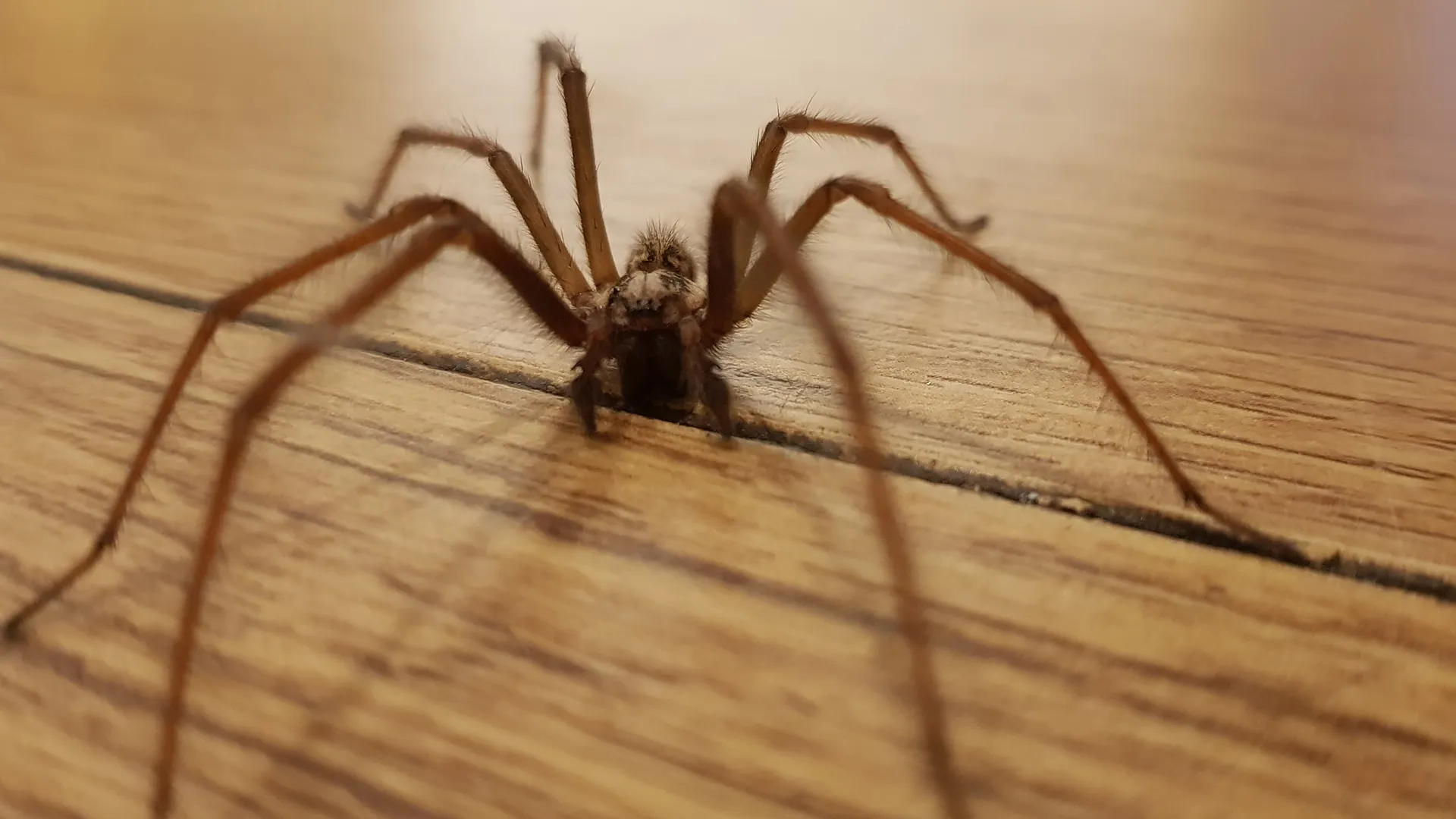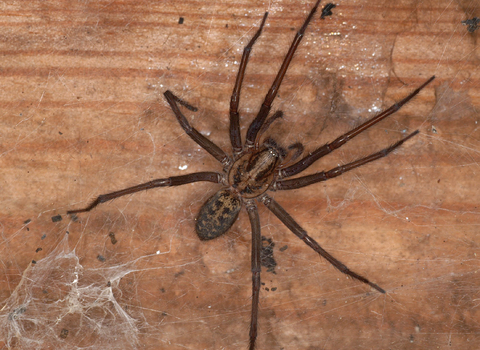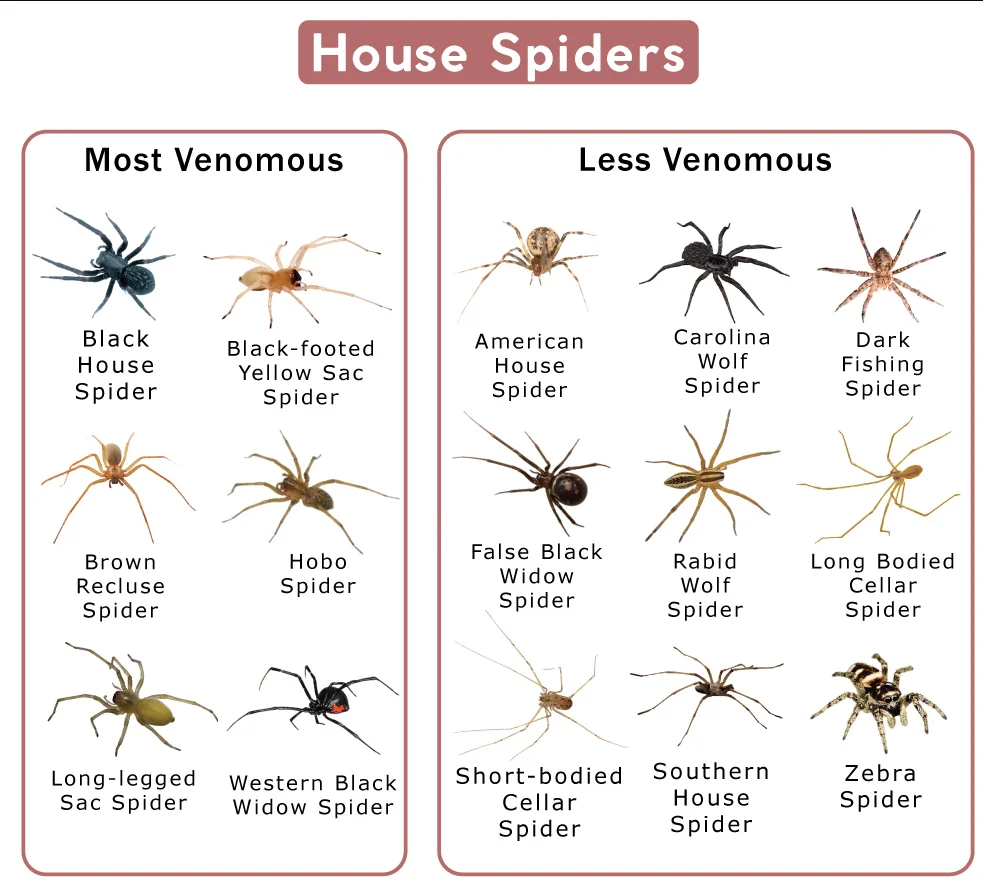Florida’s subtropical climate—marked by consistent warmth, mild winters, and ample humidity—provides a near-perfect habitat for various insects, which in turn draws spiders to feed on them. While many spider species aid in natural pest control, large spider populations inside your home or business can be unnerving and potentially risky if venomous varieties are present. In communities like Navarre, known for its coastal tranquility and suburban appeal, spiders can easily take refuge in corners, behind furniture, or in low-traffic spaces if occupants overlook initial signs. This service page highlights why spiders thrive in Florida, the warnings of a spider infestation, and why consulting a professional spider exterminator is the most reliable way to reestablish a web-free, comfortable environment.
Whether you manage a residential property in Navarre or run accommodations catering to beachgoers, detecting spider activity early—and initiating the right treatments—helps protect occupants, preserve property aesthetics, and avert repeated do-it-yourself attempts that often miss hidden webs or egg sacs.
Why Spiders Thrive in Florida
Mild Winter Temperatures
In colder states, subfreezing winters typically shrink spider populations for months. Florida’s gentle cold season barely reaches freezing levels, removing that natural population curb. Heated or air-conditioned interiors keep temperatures around 65–85°F, allowing spiders to feed and mate without the seasonal breaks seen elsewhere.
High Humidity and Ample Insect Prey
Spiders depend on insects for food, and Florida’s humidity fosters robust insect life year-round. In Navarre, along with many parts of the Panhandle, frequent rain or lawn irrigation ensures moist conditions where insects (like roaches, flies, or mosquitoes) flourish. Spiders follow these insects indoors or build webs near entrances where bugs gather at night.
Suburban Development and Movement
Residential expansions near coastal areas and short-term rentals often see occupant or guest turnovers. Spiders or their egg sacs can arrive via luggage, secondhand items, or yard debris. In multi-room buildings, spiders easily venture between spaces if occupant measures aren’t in place.
Diverse Spider Species
Florida hosts multiple spider types, each with unique behaviors:
- House Spiders: Construct messy webs in corners or behind furnishings.
- Orb Weavers: Spin large, circular webs outdoors around porch lights or gardens.
- Widow Spiders: Potentially venomous bites if threatened; often dwell in garages, sheds, or dark corners.
- Wolf Spiders: Do not spin typical webs; hunt insects at ground level, occasionally entering homes.
All can multiply under the region’s stable warmth, making occupant vigilance and specialized spider treatments key to preventing significant infestations.

Telltale Signs of a Spider Infestation
- Multiple Webs Indoors
- Spiders frequently spin webs in corners, ceilings, or window sills. An increase in new webs suggests a rising spider presence.
- Orb weavers may anchor large, circular webs outdoors near lights or doorways, capturing night-flying insects.
- Spiders frequently spin webs in corners, ceilings, or window sills. An increase in new webs suggests a rising spider presence.
- Egg Sacs
- Small, ball-shaped or disc-like sacs typically found on webs, under furniture, or in hidden corners.
- Each sac could release dozens or hundreds of spiderlings, prompting a population spike if undiscovered.
- Small, ball-shaped or disc-like sacs typically found on webs, under furniture, or in hidden corners.
- Frequent Spider Sightings
- Finding multiple spiders day after day in various areas likely means they’re feeding comfortably.
- Certain species (like wolf spiders) roam floors or walls hunting; others remain in webs near insect-rich corners.
- Finding multiple spiders day after day in various areas likely means they’re feeding comfortably.
- Insect Remains in Webs
- Observing shells or husks of flies, moths, or roaches inside webs reveals active feeding.
- Large accumulations in seldom-cleaned areas indicate a stable spider colony with ample prey.
- Observing shells or husks of flies, moths, or roaches inside webs reveals active feeding.
- Possible Spider Bites
- Most Florida spiders aren’t lethal, but some can cause painful bites requiring medical attention if occupant contact occurs.
- Higher spider populations raise the potential for accidental bites or occupant fear, undermining daily comfort.
- Most Florida spiders aren’t lethal, but some can cause painful bites requiring medical attention if occupant contact occurs.
- Damp, Unused Spaces
- Garages, sheds, attics, or basement corners accumulate webs over time if occupant oversight lags.
- Spiders exploit low-traffic zones, building nests or depositing egg sacs unobserved.
- Garages, sheds, attics, or basement corners accumulate webs over time if occupant oversight lags.
Why Ignoring Spiders Is Risky
Rapid Population Growth
Female spiders can deposit multiple egg sacs, each loaded with dozens of eggs. Without occupant or professional intervention, new spiders hatch and migrate, spinning more webs. A small presence can escalate into multi-room infiltration quickly.
Potential Bites and Occupant Worries
Even if most Florida spiders aren’t dangerous, occupant anxiety over spiders—particularly large orb weavers or widows—can disrupt daily routines. Some bites require medical attention, especially from venomous species, fueling occupant stress.
Unsightly Webs
Excess webs along walls, ceilings, or corners degrade a property’s appearance. Businesses risk poor reviews if customers encounter spider webs, while homeowners face occupant dissatisfaction over neglected corners or daily web clearing duties.
Overlapping Insect Issues
Significant spider populations often point to abundant insects fueling them. Overlooking an underlying insect infestation—like roaches—can lead to partial spider control that quickly reverses once insects remain plentiful.
Repeated or Costly Remedies Later
Unresolved spider issues produce repeated egg sac hatching, occupying more corners or hidden areas. Eliminating a multi-room colony typically demands occupant displacement, repeated chemical applications, or advanced measures—like specialized vacuuming or broader insect treatments.
Why a Professional Spider Exterminator Is Crucial
Detailed Property Inspection
A spider exterminator inspects corners, beneath furniture, and overhead beams for webs, egg sacs, and insect prey. Identifying species—such as widow spiders—helps shape exact treatments, from targeted insecticidal dust to vacuuming nest sites.
Multi-Faceted Approach
Pros physically remove webs, vacuum egg sacs, and place insecticides or dust where spiders rest or lay eggs (like cracks or overhead eaves). Pure do-it-yourself methods—like random aerosols—often kill a few visible spiders without eradicating hidden egg clusters or insect prey fueling them.
Safe, Regulated Chemical Use
Over-the-counter sprays can risk occupant or pet health if misused. Licensed exterminators carefully apply insecticides in spider harborages, ensuring occupant safety. Physical web removal or vacuuming can further limit chemical usage while still delivering results.
Addressing Underlying Insect Populations
Spiders typically remain where roach or fly densities are high. Exterminators may advise or perform insect control as well, limiting spider food sources. Occupants can upgrade to yellow “bug lights,” seal trash bins, or store leftover foods responsibly, indirectly starving spiders indoors or outdoors.
Follow-Up Assurance
Spider egg sacs could hatch weeks post-initial removal. Many exterminators schedule re-checks or occupant feedback if new webs appear. Additional spot treatments or occupant instructions finalize occupant security that newly hatched spiderlings also meet lethal conditions.

Typical Methods for Spider Treatments
- Inspection and Species Identification
- Technicians check corners, ceilings, and behind furniture for webs, egg sacs, or leftover insect carcasses.
- Confirming whether house spiders, orb weavers, widows, or wolf spiders are present shapes the recommended insecticides or removal strategies.
- Technicians check corners, ceilings, and behind furniture for webs, egg sacs, or leftover insect carcasses.
- Web and Egg Sac Removal
- Immediate vacuuming or brushing away webs severs spiders from their hunting grounds.
- Properly disposing of egg sacs outside in sealed plastic prevents hatching near trash bins.
- Immediate vacuuming or brushing away webs severs spiders from their hunting grounds.
- Insecticidal Sprays or Dust
- Residual sprays along baseboards or overhead eaves kill spiders crossing treated surfaces.
- Dust formulations in attic corners or wall voids hamper spider re-webbing. Occupant or pet exposure remains low by focusing on known spider sites.
- Residual sprays along baseboards or overhead eaves kill spiders crossing treated surfaces.
- Insect Growth Regulators (IGRs) & Prey Control
- If insects like roaches or flies are abundant, occupant or professional steps hamper spider food supply.
- IGRs may be used to choke off insect populations, indirectly limiting spider colonization.
- If insects like roaches or flies are abundant, occupant or professional steps hamper spider food supply.
- Indoor Vacuum or Steam
- Some pros use steam on upholstery or curtains, instantly killing spiders hiding in fabric folds.
- Frequent occupant vacuuming collects stray spiders, eggs, or insect remains that draw more spiders.
- Some pros use steam on upholstery or curtains, instantly killing spiders hiding in fabric folds.
- Exclusion & Outdoor Adjustments
- Sealing cracks around windows or door sweeps, fixing torn screens, and minimizing bright outdoor lights help deter insect swarms and thus spider webs.
- Clearing yard debris or overgrown shrubs removes humid, shady spots for spiders to nest.
- Sealing cracks around windows or door sweeps, fixing torn screens, and minimizing bright outdoor lights help deter insect swarms and thus spider webs.
- Follow-Up Visits
- Newly hatched spiderlings might appear weeks after initial removal. Re-check occupant sightings or treat corners if webs reappear.
- Additional occupant guidance ensures no fresh pockets of insects or clutter let spiders rebound.
- Newly hatched spiderlings might appear weeks after initial removal. Re-check occupant sightings or treat corners if webs reappear.
Service Area: Navarre, Florida
Spiders can inhabit any environment with consistent insect prey, but this page concentrates on Navarre, a scenic Gulf Coast locale blending residential neighborhoods and beach getaways. Florida’s mild winter fosters spider breeding year-round, so occupant attention plus professional solutions remain vital to preventing large-scale webbing inside or around your property.

Why Choose Us
Florida-Customized Solutions
We adapt recognized spider control tactics—like vacuuming or removing webs, applying insecticidal dust, and controlling underlying insect populations—to the local climate and occupant patterns of Navarre. By integrating occupant housekeeping with professional extermination, we ensure thorough, lasting success instead of short-term partial fixes.
Thorough Inspections
Our technicians examine attic beams, behind furniture, or overhead corners, identifying spider species and web densities. We locate hidden egg sacs or insect prey fueling spider growth. Once we gauge infestation scope, we propose targeted chemical or physical removal strategies for immediate occupant relief.
Safe, Effective Methods
We employ regulated insecticides around cracks, baseboards, or eaves—common spider nest areas. This approach kills spiders and potential new arrivals while minimizing occupant or pet exposure. We also physically remove webs or egg sacs when feasible, limiting re-webbing or hatching.
Underlying Insect Reduction
Since spiders follow insects, occupant synergy—like sealing trash, using less bug-attracting outdoor lighting, or adopting roach control—cuts spider food sources. We highlight these steps to hamper future re-invasions once occupant or professional clearance is achieved.
Follow-Up and Monitoring
Spider egg sacs can hatch weeks after initial removal. Re-check occupant feedback or additional treatments confirm newly emerged spiders also face lethal conditions. If occupant sightings persist, we refine or expand treatments to solidify occupant comfort and a spider-free outcome.
Next Steps
Seeing multiple webs in corners, discovering egg sacs near ceilings, or worried about potential widow spiders in garages? Contact us to learn more or schedule your service. Our spider treatments in Navarre merge detailed property inspections, physical web or egg sac removal, precise insecticidal applications, occupant-friendly instructions, plus crucial follow-up—thoroughly expelling current spiders and preventing re-colonization.
Act quickly to spare occupant anxiety or fear, avoid potential bites, and maintain a web-free space. Trust our Florida-tailored spider exterminator expertise to handle each species effectively, ensuring your home or business in Navarre remains clear of invasive arachnids despite the region’s year-round mild winters and robust insect presence.
Maintaining a Spider-Free Environment
Once professional treatments diminish spider numbers, occupant diligence keeps them from reappearing:
- Prompt Web and Egg Sac Removal
- Inspect corners, ceilings, or under furniture regularly—vacuum or brush away any fresh webs or sacs.
- Dispose of them outside in sealed plastic to prevent hatching in trash bins.
- Inspect corners, ceilings, or under furniture regularly—vacuum or brush away any fresh webs or sacs.
- Use Less Insect-Attracting Lights
- Switch bright outdoor bulbs to yellow “bug lights,” reducing insect swarms that lure spiders near entrances.
- Position or angle lights away from windows or doors to discourage nighttime insect gatherings.
- Switch bright outdoor bulbs to yellow “bug lights,” reducing insect swarms that lure spiders near entrances.
- Seal Entry Points
- Caulk cracks, fix damaged screens, or install door sweeps to keep insects and spiders out.
- Checking and repairing foundation or siding gaps also hinders spider infiltration routes.
- Caulk cracks, fix damaged screens, or install door sweeps to keep insects and spiders out.
- Clear Yard Debris
- Remove leaf litter, overgrown shrubs, or stacked wood near walls—these damp corners harbor insects and thus spiders.
- Keeping yard edges trimmed denies spiders comfortable nesting spots close to your home.
- Remove leaf litter, overgrown shrubs, or stacked wood near walls—these damp corners harbor insects and thus spiders.
- Monitor and Control Other Insects
- Roach or fly infestations fuel spider growth. Quick occupant or professional steps to curb insect presence starve spider populations.
- Store trash securely, fix leaky faucets, and maintain dryness to hamper insect breeding indoors or in yards.
- Roach or fly infestations fuel spider growth. Quick occupant or professional steps to curb insect presence starve spider populations.
- Declutter Storage Areas
- Minimizing random piles or boxes in garages, attics, or closets limits potential spider hideouts.
- Organized shelving reveals new webs, prompting occupant vacuuming or dusting before spider clusters expand.
- Minimizing random piles or boxes in garages, attics, or closets limits potential spider hideouts.
- Inspect Secondhand Items
- Spiders or their egg sacs could hitch rides in used furniture or décor.
- Thoroughly examine and vacuum suspicious pieces prior to bringing them inside.
- Spiders or their egg sacs could hitch rides in used furniture or décor.
By weaving occupant-driven housekeeping—like routine vacuuming, clutter reduction, or insect management—together with specialized spider extermination if needed, property owners in Navarre effectively deter arachnids from capitalizing on Florida’s mild climate. Despite year-round warmth inviting robust insect populations, consistent vigilance and professional spider control ensure your home or business stays web-free and comfortable for all.
